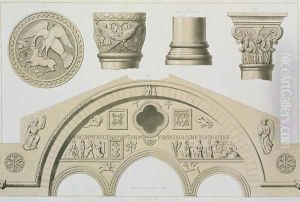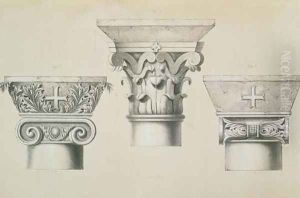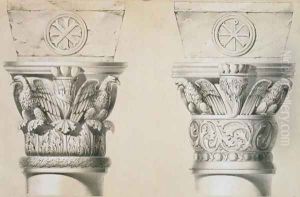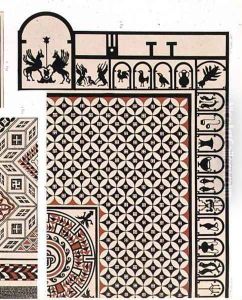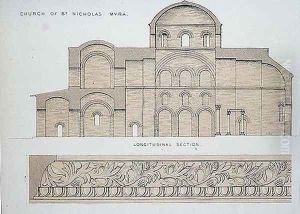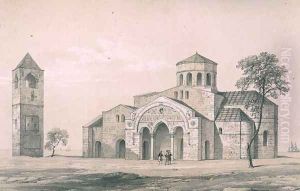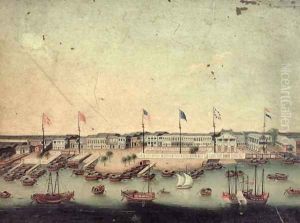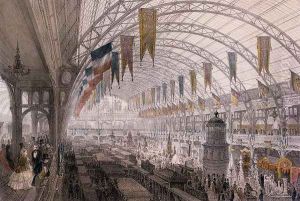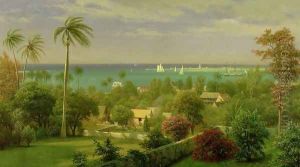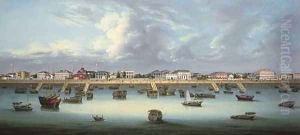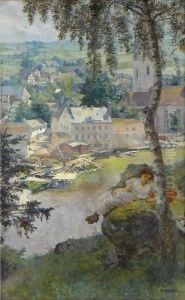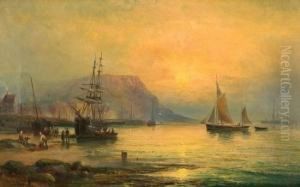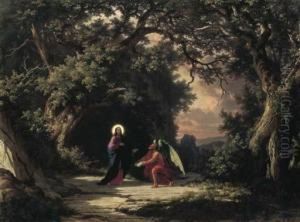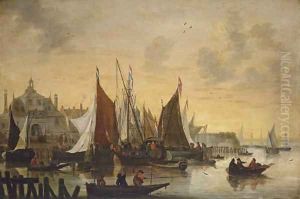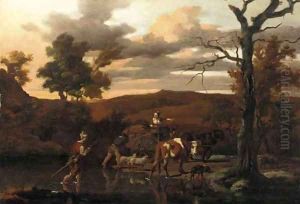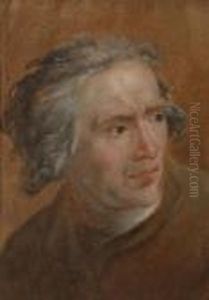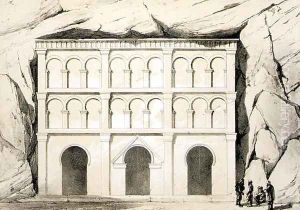





View of the grotto at Urgub demonstrating that the horseshoe arch is of Byzantine rather than Muslim origin, pub. by Day & Son
-
About Reproduction
Discover the allure of art with our faithful reproduction of "View of the grotto at Urgub demonstrating that the horseshoe arch is of Byzantine rather than Muslim origin, pub. by Day & Son", originally brought to life by the talented Texier, Charles Felix Marie. Unlike posters or prints, our hand-painted oil painting breathes an unique sense of depth and texture into your space. Every detail, every stroke, and every texture is meticulously recreated, paying the perfect homage to Texier, Charles Felix Marie and his artistic vision.
Owning this piece is more than just decoration - it's a statement of your refined taste in art. Let the vibrant colors and intricate details of this replica serve as a daily reminder of the beauty in our world. Elevate your decor and appreciate the richness of art with our replica of this masterpiece.
-
Painting Description
"View of the grotto at Urgub demonstrating that the horseshoe arch is of Byzantine rather than Muslim origin" is a notable lithograph published by Day & Son, created by the French archaeologist and architect Charles Felix Marie Texier. Texier, renowned for his extensive travels and archaeological surveys in Asia Minor, produced this work as part of his broader efforts to document and analyze ancient architectural forms and their historical contexts.
The lithograph captures a detailed view of a grotto located in Ürgüp, a town in the Cappadocia region of Turkey, which is known for its unique rock formations and historical cave dwellings. The focal point of the image is the horseshoe arch, a distinctive architectural feature that has been the subject of scholarly debate regarding its origins. Texier's work argues for the Byzantine origin of the horseshoe arch, challenging the more commonly held belief that it was a Muslim innovation.
In the lithograph, the horseshoe arch is depicted with meticulous attention to detail, showcasing its curvature and structural elements that align with Byzantine architectural styles. Texier's argument is supported by his extensive research and comparative analysis of architectural elements found in various Byzantine structures across the region. He posits that the horseshoe arch was a prevalent feature in Byzantine architecture before it was adopted and adapted by Muslim architects in later periods.
The publication by Day & Son, a prominent lithographic firm in the 19th century, ensured that Texier's findings reached a wide audience, contributing to the ongoing discourse on the cultural and architectural exchanges between Byzantine and Islamic civilizations. The lithograph not only serves as a visual document but also as a scholarly assertion of the Byzantine influence on architectural forms that were later integrated into Islamic art and architecture.
Texier's work remains a significant contribution to the field of architectural history, offering insights into the complexities of cultural interactions and the transmission of architectural knowledge across different civilizations. The "View of the grotto at Urgub" stands as a testament to the rich and intertwined heritage of the Byzantine and Muslim worlds, highlighting the importance of rigorous historical and archaeological scholarship in understanding the origins and evolution of architectural forms.
-
Lead Time & Shipping
When you order this oil painting replica, it typically takes 2-3 weeks to paint. If the artwork is more complex, it might need a little more time to ensure the best quality. Once it's ready, we'll send you a photo for your approval. After you give the green light, we'll ship it to you for free.
-
Return & Refund
We believe in the quality of our hand-painted oil painting reproductions, and your satisfaction is our priority. If for any reason, you are not completely satisfied with your purchase, we offer a 45-day return policy. You can return your artwork within 45 days of receipt and receive a full refund. Please note that the artwork must be returned in the original packaging and in the same condition as it was received.





